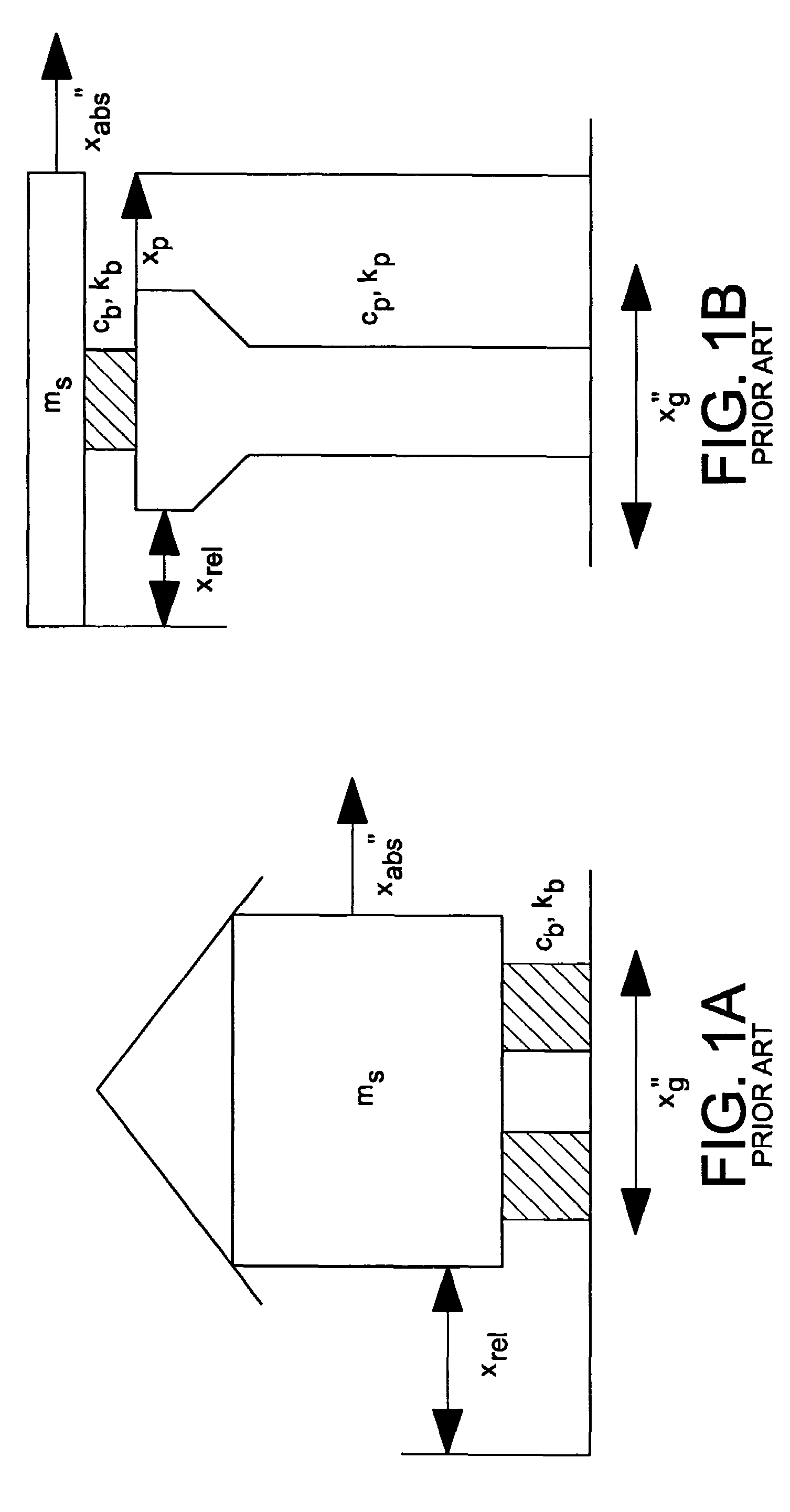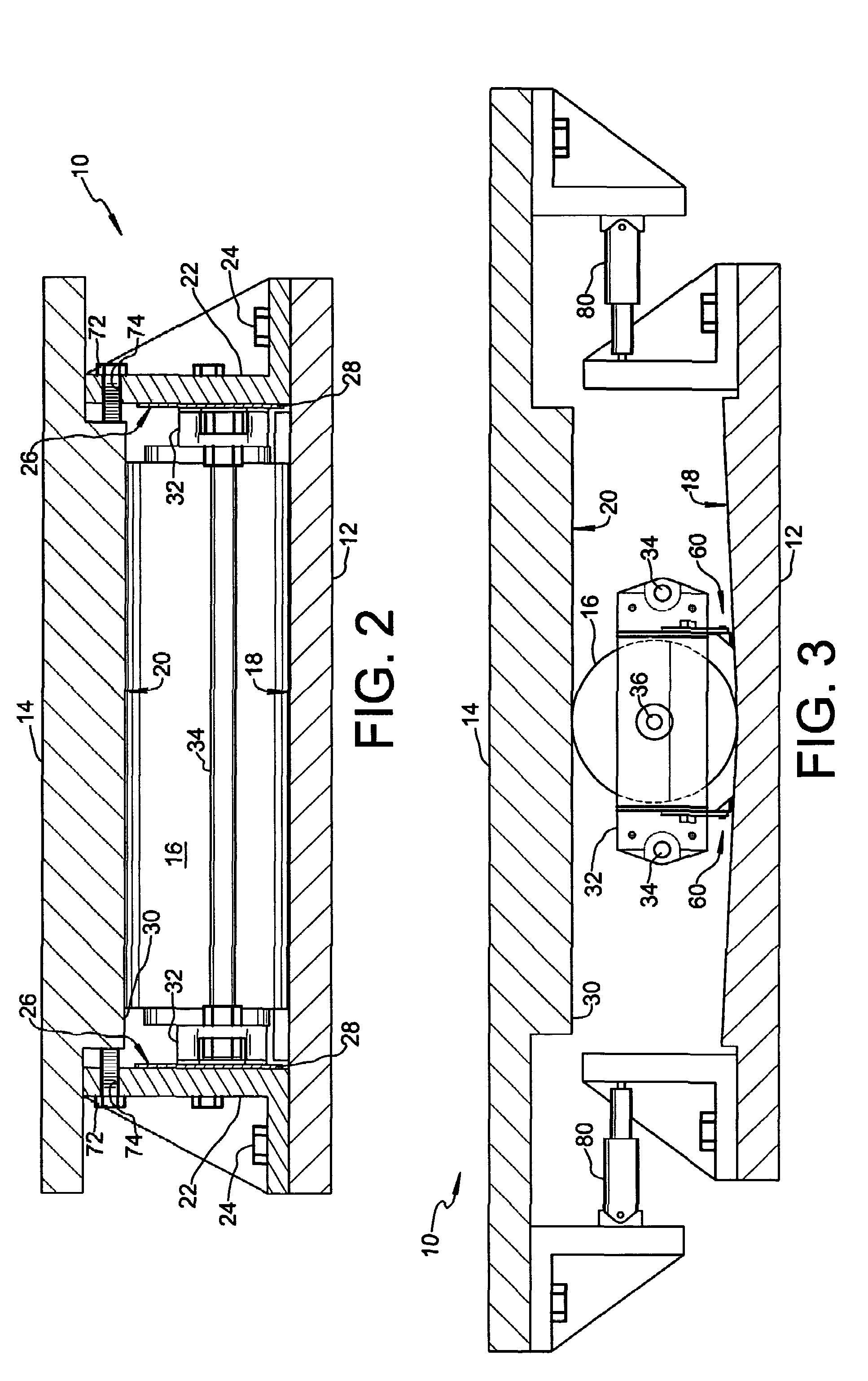Seismic isolation bearing
a technology of seismic isolation bearing and bearing plate, which is applied in the direction of bridges, mechanical equipment, bridge structural details, etc., can solve the problems of dangerous displacement, inefficient space utilization of seismic isolation bearings of this type, and large upper portions, so as to achieve the effect of dissipation of energy
- Summary
- Abstract
- Description
- Claims
- Application Information
AI Technical Summary
Benefits of technology
Problems solved by technology
Method used
Image
Examples
second embodiment
[0085]As mentioned above, certain factors inherent in the structural environment for which the isolation bearing is designed may dictate that different isolation characteristics be present with respect to the X isolation axis as compared with the Y isolation axis. One way this is achieved in isolation bearing 110 of the second embodiment is by providing a different frictional force associated with sliding guides 132 than that associated with sliding guides 133, for example by specifying different friction tracks and friction plates to attain different coefficients of friction for the X and Y isolation axes. Another way this is achieved in isolation bearing 110 is by providing different restoring forces along the X and Y isolation axes through the use of different slope angles for downwardly facing bearing surface 119 and upwardly facing bearing surface 121. This approach offers means for limiting peak bearing displacement, which is substantially inversely proportional to the slope a...
first embodiment
[0086]Damper units (not shown in FIGS. 8 and 9) of different types can be installed between lower plate 112 and intermediate plate 113 to act along (parallel to or coincident with) the X isolation axis, and between intermediate plate 113 and upper plate 114 to act along (parallel to or coincident with) the Y isolation axis. In this regard, reference is made to the description of damper units 80 used in connection with isolation bearing 10 of the
[0087]FIGS. 12 and 13 depict a locking mechanism useful in either isolation bearing 10 of the first embodiment or isolation bearing 110 of the second embodiment as an alternative to bolts 72 described above in connection with isolation bearing 10. In the context of the Y isolation axis of isolation bearing 110, the locking mechanism comprises a first member 140 fixed relative to upper plate 114 and having a pin hole 142 therethrough, a second member 144 fixed relative to intermediate plate 113 and having a travel slot 146 that extends paralle...
PUM
 Login to View More
Login to View More Abstract
Description
Claims
Application Information
 Login to View More
Login to View More - R&D
- Intellectual Property
- Life Sciences
- Materials
- Tech Scout
- Unparalleled Data Quality
- Higher Quality Content
- 60% Fewer Hallucinations
Browse by: Latest US Patents, China's latest patents, Technical Efficacy Thesaurus, Application Domain, Technology Topic, Popular Technical Reports.
© 2025 PatSnap. All rights reserved.Legal|Privacy policy|Modern Slavery Act Transparency Statement|Sitemap|About US| Contact US: help@patsnap.com



